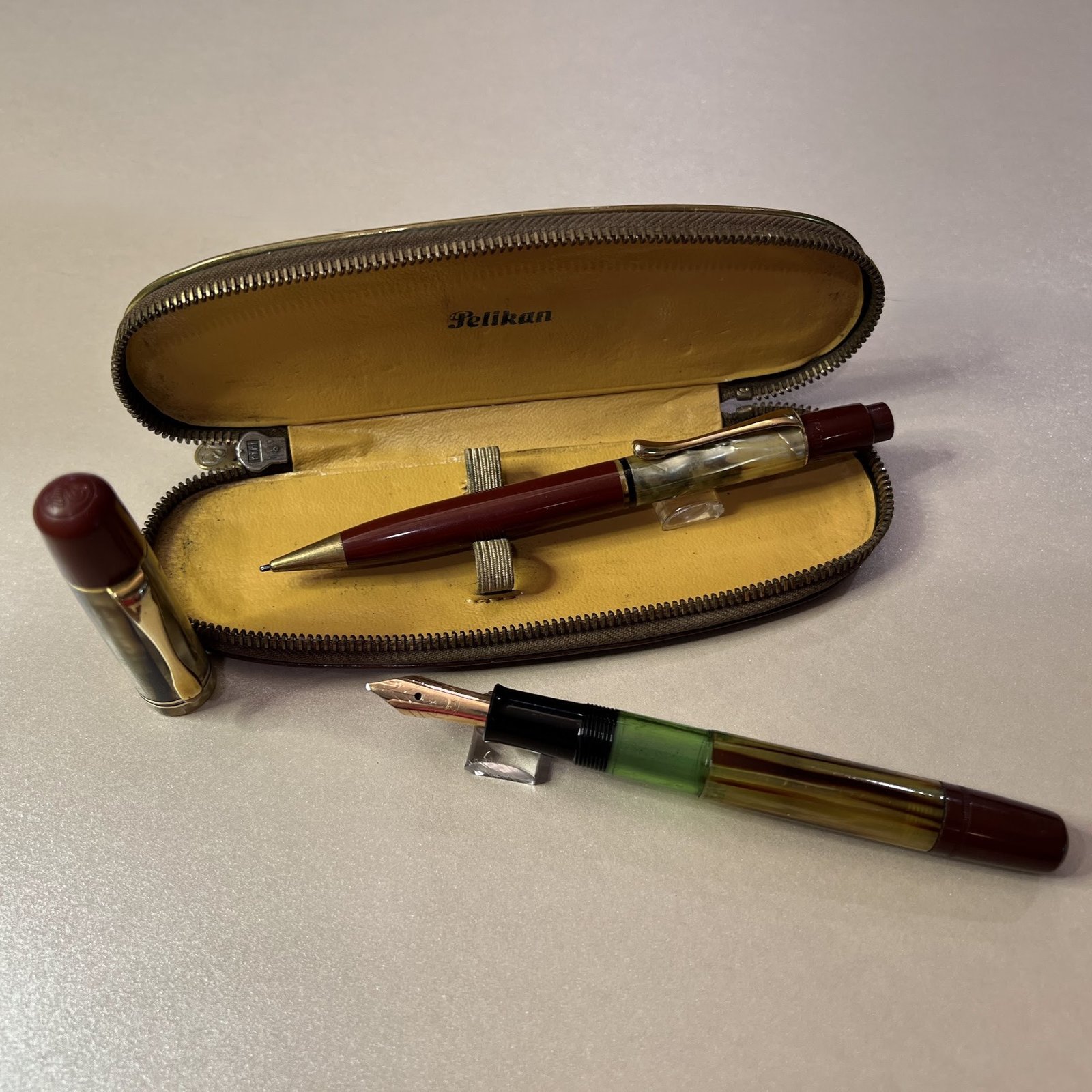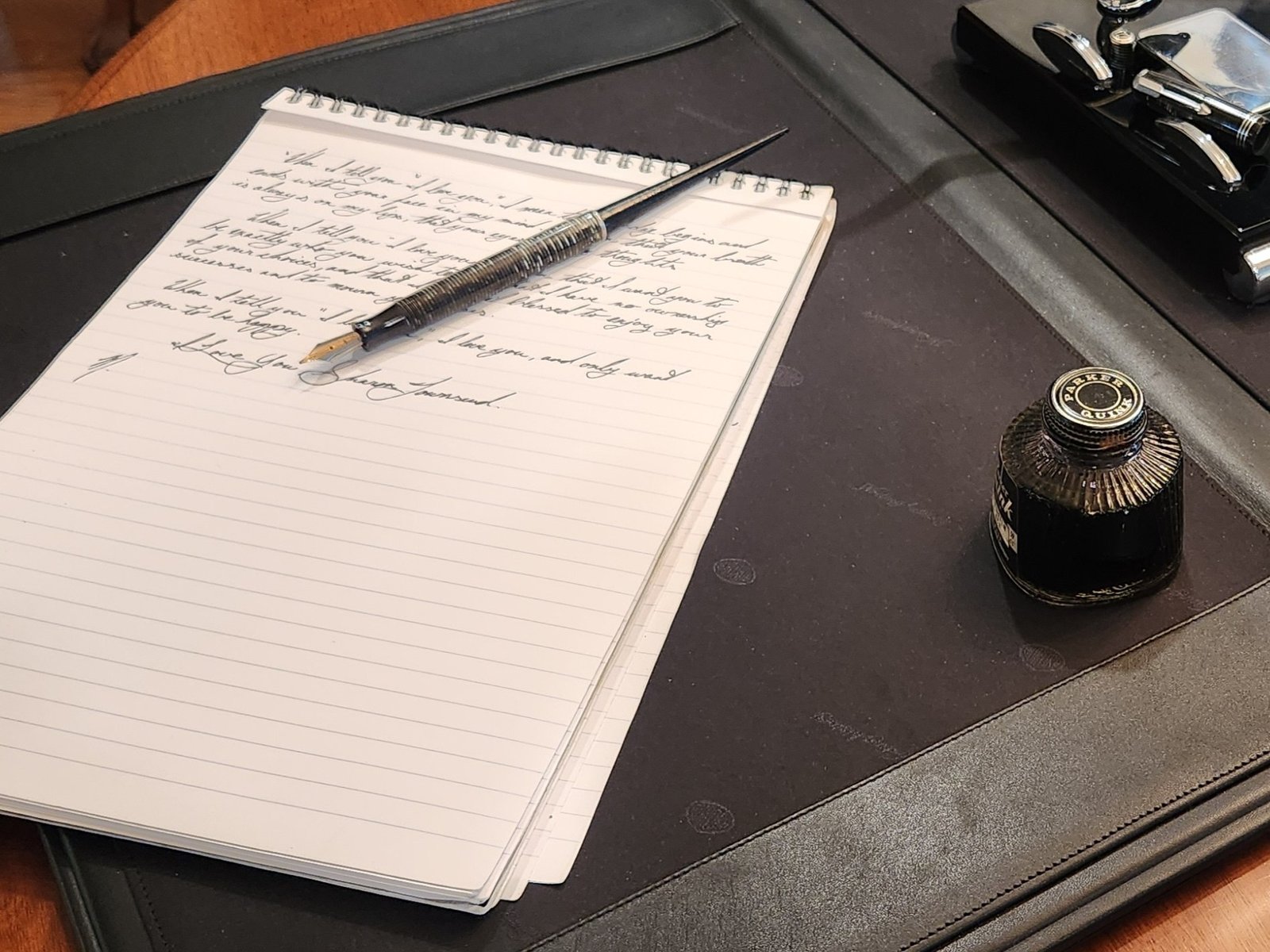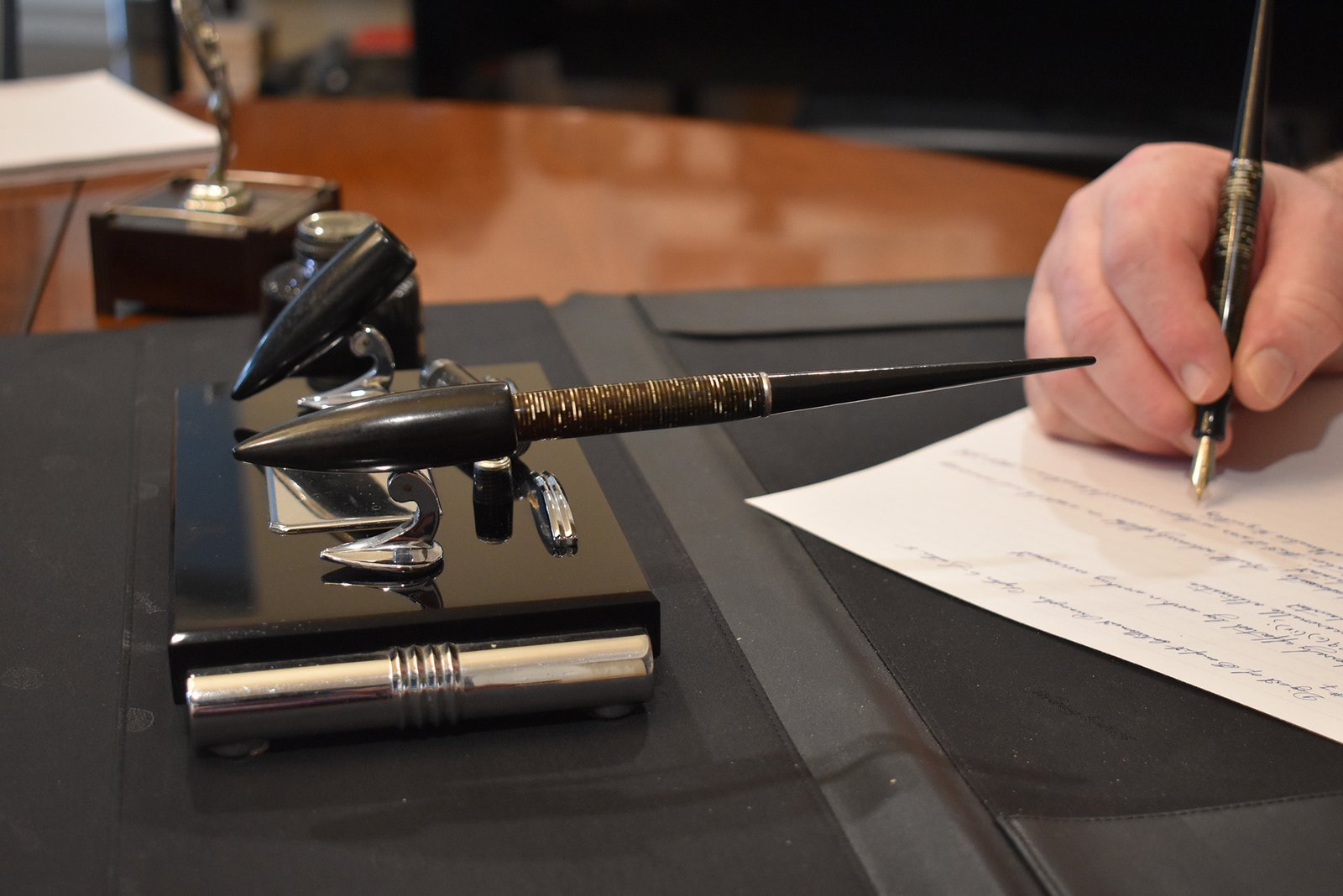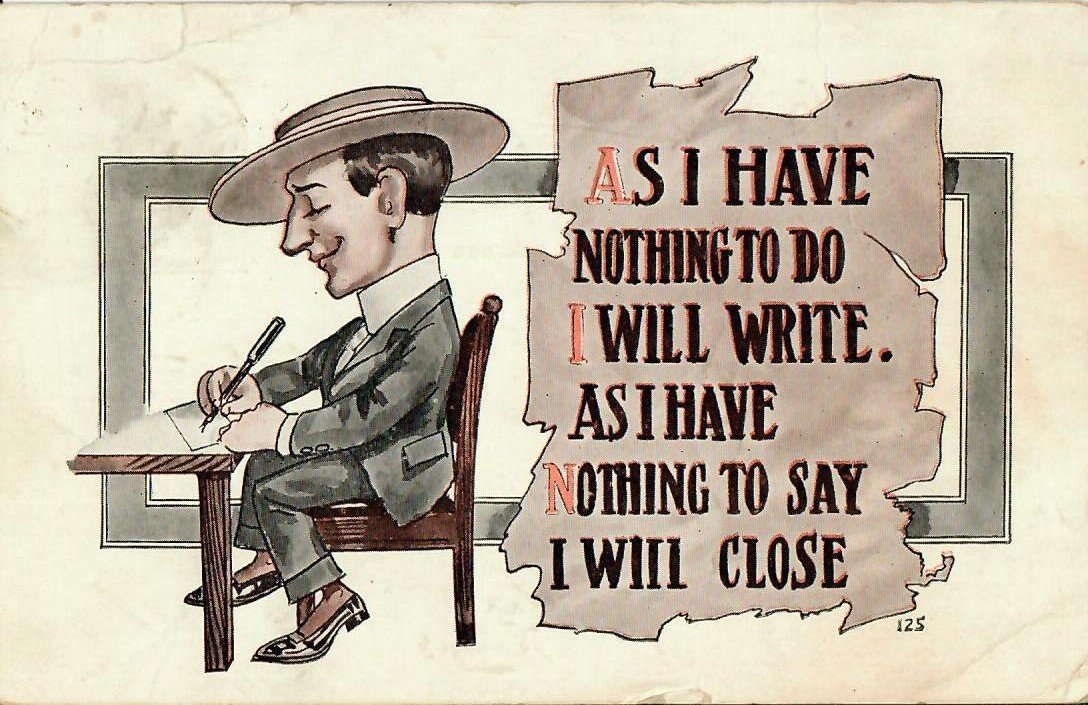
Pelikan 101N, 1937
We communicate in a very inefficient and dated format. In this digital era, we have grown accustomed to instant messages and predictive models that can finish our sentences without anything more than a keystroke. I now understand we have programs that can write entire articles for us, and we need only tell it a rough outline. While I do not understand the need for such amazing efficiency, I respect that others may. We can choose from a multitude of “fonts” and simulated scripts that appear, upon casual inspection, human. It could be that a disembodied intelligence is penning this actual post.
It is not. This is me, your all too human interpreter, full of lusts and biases and faults. I don’t know if a computer can “like” who it is, but I can. And I do.
I express myself verbally or in text, but it is myself that I express; not a simulation or logic machine, and I need a tool to express and elucidate my thoughts. Tactile functions are part of my expression, and those require certain tools to make permanent my fleeting expressions. As I love the written word in all its vagueries and poetic licence, I love the tactile sense of pen gliding across the page as an extension of my mind.
So all this is an argument for any writing instrument; say, a stick, brush, or ballpoint. But I am a sensitive sort, and I have a strange reverence for the dogeared and well worn. I suppose that may be a function of too many seasons, but that is me, and I like old shit.
When I fill a vintage pen, I immediately get a sense of the age in which it was designed and manufactured. From its material to its style, to its quality of writing. If it is soft and expressive, responding to every subtle change in speed or pressure, I know that nib was built for a hand that knew how ideas were conveyed and sought to give a sense of themselves in every word. If that pen is firm and unwavering, it is for concise and effective communication, often with the use of carbon paper for replication; business correspondence. A proud and stylish nib is for extroverts and those who want to impress others visually.
And the material of the pen matters. It is a stylistic statement. Deco or Bauhaus, Art Nouveau or MCM, they all give others a sense of who we are and please or displease us according to our nature.
The Nib, or, as originally named: the pen (the rest is just a “pen holder”), can be made from carbon steel, stainless steel, brass, 9,14,18,23K gold, rhodium, even glass, and can be a combination of any of them. Again, the choice is variable and can include reasons such as durability, cost, prestige; you decide. And then there is nib profile, from needle point to music nib and everything in between.
The thing that really sets vintage pens apart is the way they are filled. It all started with the “dip” pen: not a fountain pen at all.
I once read that Thomas Jefferson actually designed a fountain pen. It was shite, but then he was more philosopher than engineer. He ended up investing $5.00 on a fountain pen. Not a bad investment considering the ungainly POS he drew up.
Charles Goodyear, that marvellous self-taught chemist, was the one that allowed Lewis Waterman (insurance agent), to create the first real functioning fountain pen in 1884. If it wasn’t for the invention of “vulcanite” or hard rubber, we might still be dipping into inkwells in our classroom desks: ink-stained wretches, unruly messy boys with stains in their shirt pockets, and little girls getting their pigtails dipped into those inkwells.
We really have to recognize that there is little that modern pens can do that the vintage pens cannot do and often much better. Even the cartridge is not a new idea, glass cartridges existed in the 19th c. Modern pens are often plastics married with metal parts and are likely to shrink and crack over time, extruded plastics are famously unstable and weak, and acrylics are not immune. Old plastics are not immune either, but, after 70 or more years, we are likely to see clearly whatever degradation has occurred, and the peculiarities of mixed materials was not as common a flaw in the past. Lastly is cost. Vintage pens often give much more bang for the buck, often sporting 14k gold nibs and costing under $200, unless something ridiculously exotic, and then it could get weird.
About vintage flex:
If you have never written with a vintage flex, you are missing something. A flex, unlike the demonstrations you often see online, doesn’t require any extra work, it just reacts to your natural hand; wider line on the downstroke as you naturally increase the pressure LIGHTLY, fine on the upstroke. If you need to know what the effect of that writing is, go to virtually any document of written letter from before 1935, and note the flow and character of the hand.
You see, before carbon paper became so ubiquitous in business writing, stiff nibs were seldom desired, except for book-keeping where small and precise notation was needed.
So companies like Waterman’s, Eversharp, Conklin, made nibs for the written word, and took pride in the flexibility and varied qualities of their pens. Now, with notable exception being some Japanese makers, flex nibs are hard to come by and when they are available, usually fall short of expectation.
“I heard old pens are finicky”
Some pens are not well designed, and they usually lost market share very quickly, as competition for a person’s hard-earned money was stiff.
The first ballpoint, the Birome, marketed by Eversharp in North America, went for $15.00!!
That is equivalent to over $200.00 today and nearly bankrupted Eversharp. We often refer to pen cost now in terms of how many days wages it would cost. On that calculation, vintage pens are “cheap like borscht”.
The pens that lasted, the good ones, are anything but finicky. They were designed to be durable and reliable…and repairable. Like an old toaster, they just keep working; nothing disposable about it.
What’s more: these pens become accustomed to your hand, eventually to be your perfect writing instrument. Sometimes we have to replace a sac, if you have unknowingly used some weird ink that eats natural rubber. Fortunately, most people respect our advice and stick to simple inks.
Finally:
Buy your pens from someone who knows what they are all about… or get them from a junk shop, garage sale, or waste bin, knowing what they require to be solid daily users. A full restoration of a lever filler usually starts around $80.00, so that $20.00 pickup is now $100.00, and it could be worth many times that, depending on brand, age, quality and condition. But don’t go buying pens as an “investment”, buy them because they are cool, fun, weird, or amazingly beautiful. That is what we do: we give new life to the neglected pleasures.
Have fun, remember Windex is great for cleaning ink off your hands, and don’t shake your pens out anywhere near curtains!
Pictured:
Pelikan 101N, 1937
More From the Blog
Chapter Un
One of the most common questions I am asked, just after: “Are you any relation to Mike?”
Chapter Duh
Some twenty odd years ago, I was walking with my spouse along south Main Street, Vancouver, and we came upon a peculiar shop, [...]
The Mystique of the Fountain Pen
Many of my clients wax poetic about the “mystique” of the fountain pen; about its character, expressiveness and je ne sais quoi. Blah, [...]
CATEGORIES
TAGS


